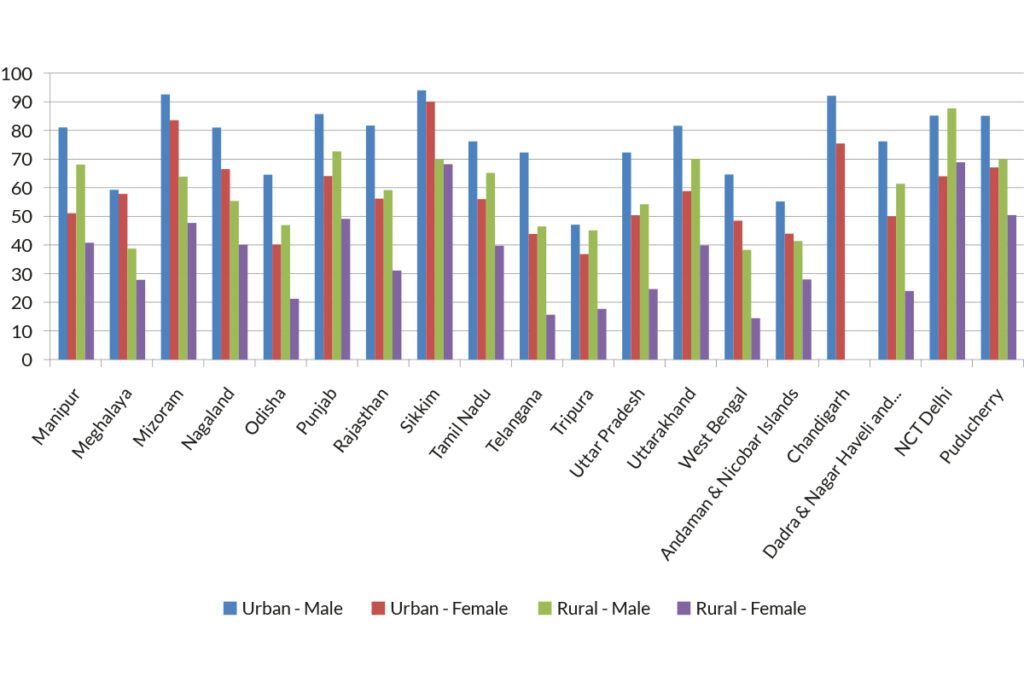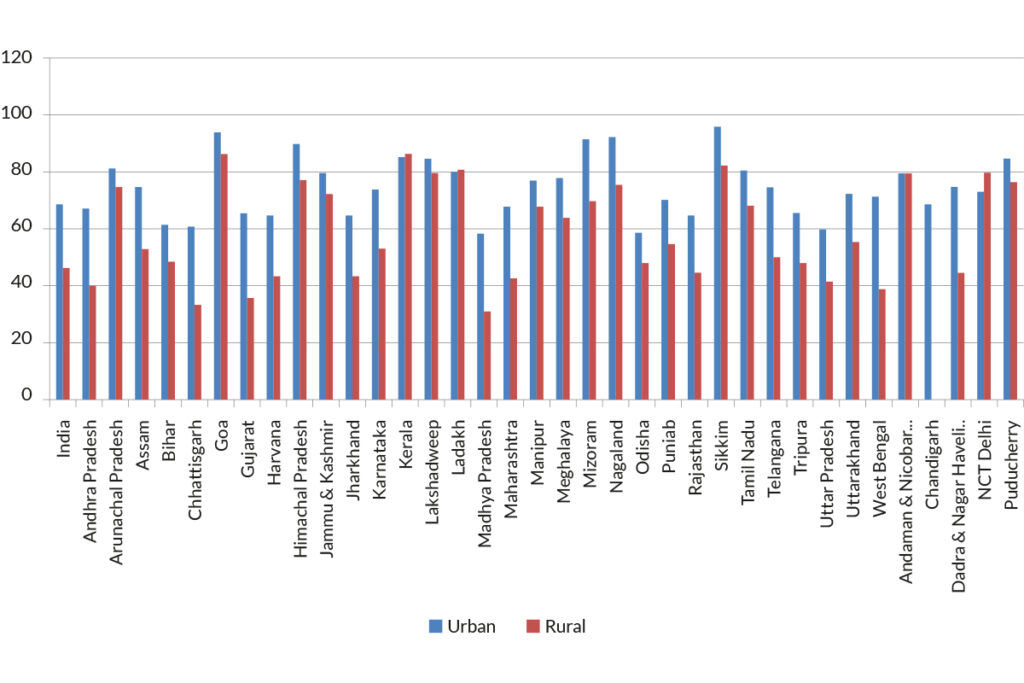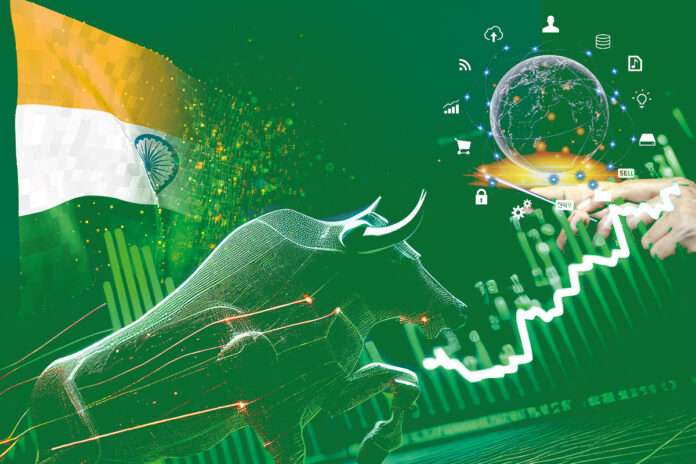India’s digital divide significantly impacts socio-economic inequalities, making improved digital infrastructure, digital literacy, and low-cost of digital services the need of the hour
Words by Karan Karayi
In today’s era of unprecedented technological advancements, India is grappling with a widening digital divide between the haves and the have-nots. With individuals, households, businesses, and geographic areas at different socio-economic levels in terms of their opportunities to access Information and Communication Technologies (ICTs) and use the internet for various activities, the impact of this divide on inequality in India has raised concerns, with the UN Deputy Secretary-General Amina Mohammed stating that it has the potential to be the new face of inequality.
Internet Usage in India
According to the International Telecommunication Union (ITU), only 43% of the population in India uses the internet. However, this figure masks significant gender disparities. The IAMAI-Kantar Report reveals that 58% of male individuals use the internet, while only 42% of female individuals have access to it. The gender gap becomes even more pronounced when we consider the data from the National Family Health Survey (NFHS) 2019-21. The survey shows that only 57.1% of males and a mere 33.3 percent of females have ever used the internet.


Percentage of individuals who have ever used the internet: State-wise gender and rural/urban divide (Source: Data from NFHS 2019-21)
When we examine the rural-urban divide, the disparities are even starker. NFHS data reveals that 72.5% of urban males and 51.8% of urban females have ever used the internet. In contrast, only 48.7% of rural males and a mere 24.6% of rural females have access to the internet. This rural-urban divide persists across all states, with urban males consistently having the highest percentage of internet users, while rural females have the lowest.
Furthermore, the digital divide extends beyond gender and rural-urban disparities. Disadvantaged caste groups also face significant barriers to internet access. Studies indicate that Scheduled Tribe (ST) individuals have 27 percentage points lower access to the internet compared to other individuals.
Mobile Ownership in India
While internet usage remains a challenge for many, mobile ownership has witnessed significant growth in India. The Connected Women: The Mobile Gender Gap Report 2021 by GSMA reveals that 79% of adult males and 67% of adult females in India own a mobile phone. This indicates a general trend of increasing mobile phone ownership, especially among women.

Women having a mobile phone that they use – State-wise Rural-Urban divide (Source: Data from NFHS 2019-21)
However, when we consider the rural-urban divide, disparities in mobile ownership become apparent. The NFHS data shows that a higher percentage of urban women own mobile phones compared to rural women. In states and union territories such as Kerala, Ladakh, Delhi, Andaman, and Nicobar, rural women even have greater access to mobile phones. Still, it is worth noting that age and caste group further contribute to the digital divide in mobile ownership.
Impact on Education

The digital divide has had significant implications for education in India, especially during the COVID-19 pandemic. Access to online education remains a challenge for many, particularly in rural areas where internet connectivity is limited. Only 17% of individuals in rural areas have access to the internet, compared to 44% in urban areas. This disparity hampers the ability of students from marginalized communities, such as Scheduled Castes (SC) and Scheduled Tribes (ST), to access educational resources.
The digitsisation of education has yielded mixed results. While start-ups have benefited from the increased demand for online learning, Edtech products remain inaccessible to many due to their high costs. The average cost of these products or services are estimated to be INR 20,000, while the average income of the poorest 20% households is INR 25,825. Additionally, teachers faced challenges in delivering education digitally, with many lacking adequate training and access to necessary devices.
Moreover, the unavailability of mid-day meals, which are typically provided in schools, posed a concern for parents during school closures at the height of the pandemic. Despite government advisories, more than 35% of parents reported that their children did not receive mid-day meals during the biggest health scare of our generation.
Impact on Healthcare

The digitisation of healthcare, as seen through initiatives like the National Digital Health Mission (NDHM), aims to improve access to healthcare services in India. However, inadequate digital infrastructure and literacy posed challenges for its implementation. Over 70% of the population in India has poor or no connectivity to digital services, hindering the intended benefits of digitized healthcare.
Tools such as telemedicine platforms and the maintenance of electronic health records require access to smartphones, computers, and the internet. The lack of connectivity created a hierarchy in healthcare access, with digitally disconnected individuals having faced difficulties in booking COVID-19 vaccine slots or accessing healthcare apps. This led to disparities in vaccine distribution, with urban areas receiving more doses than rural areas.
The growth of digital financial services, including the Unified Payment Interface (UPI), has also seen rapid growth. However, the least privileged segments of society, who can perhaps be the greatest beneficiaries of it, are less likely to engage in digital transactions due to various barriers. Marginalised communities, including women, youth, and those living in remote rural areas, have lower usage of formal financial services. This highlights the need to address the digital divide to ensure financial inclusion for all.
The Way Forward
Addressing the digital divide is crucial to unlock India’s economic potential and promote social equality. Government initiatives like the National Digital Literacy Mission and the Pradhan Mantri Gramin Digital Saksharta Abhiyan have been introduced to increase digital literacy. However, there is a need to ramp up efforts to improve digital infrastructure, particularly in rural areas, and ensure physical access to ICT for all sections of society.
Further, underprivileged groups need to be motivated to incorporate technology into their daily lives, and digital skills must be imparted to bridge the gap. Stronger regulation and efforts to reduce the cost of Edtech products can improve access to online education. Initiatives like the NDHM should be accompanied by measures to enhance digital infrastructure and promote digital literacy to ensure the effective delivery of healthcare services.
India has grand growth aspirations, but bridging India’s digital divide is crucial for inclusive growth and to harness the full potential of technology. By addressing disparities in internet usage, mobile ownership, and access to digital services, India can create a more equitable society and unlock economic opportunities for all its citizens.


